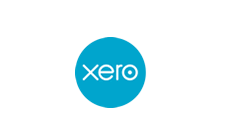How to get tax relief for transition year losses
Basis periods have now been abolished for working out tax for unincorporated businesses. Whilst there’s lots of guidance about making the transition from the old to the new rules for profitable businesses, what’s the position if there’s a loss?
-
Gift relief to be "modernised"
A restriction on gift holdover relief will be reformed in 2026. This will affect gifts of certain shares, so what's the full story?
-
Government rushes through NI cap on pension salary sacrifice
The government has already drafted legislation to impose a £2,000 limit on NI exempt pension contributions under salary sacrifice arrangements. What else do we know?
-
Sneaky change is a blow for side hustles
With most of the media focused on the headline-grabbing announcements from the Budget, a read of the published small print reveals another change coming in 2029. It’s bad news if you are an employee with a side hustle, but what’s going on?

Basis period reform
You’re probably aware that from tax year 2024/25 unincorporated businesses must report their profits on a “tax year” basis. Transitioning to this method can require you to report the figures for two accounting periods in your tax return for 2023/24.
Accounting result times two
Where you need to report the results for two accounting periods for 2023/24 (the transition year), there are two elements to take account of. The “standard” element, which is the result for the accounting period ending in 2023/24, plus the “transition” element, which is the result for the period starting on the date following the previous period and ending on 5 April 2024.
If you made a loss in one or both of the accounting periods for the transition year, the calculation of the profits taxable or losses allowable for 2023/24 is trickier.
Losses
Because the standard and transition element are derived from two separate accounting periods, your overall position might include a combination of two profitable periods, a profit and a loss (in either order), or two loss-making periods. The tax consequences of this depend on which element the loss relates to, and whether there is an overall taxable profit or loss for 2023/24.
Overall profit
If there’s an overall profit made up of a loss for the standard element and a profit in the transition element, the net profit, known as the “additional” profit, is taxable for 2023/24. Remember, as mentioned in our previous article, you must deduct overlap relief from the aggregate of the elements to arrive at the taxable profit.
If there’s an overall profit for 2023/24 you can spread the tax on the additional profit over five years. But spreading isn’t allowed if the additional profit is made up of profit in the standard element and a loss in the transition element.
Overall loss
If the sum for the standard and transition elements shows an overall loss, the tax consequences depend on whether the deduction of overlap relief causes the loss or just increases it. The part of the loss attributable to overlap relief qualifies for special loss relief, known as terminal loss relief.
Example. Terry prepares his return for 2023/24. He has a “standard” profit of £3,000, and a “transition” loss of £4,500 before overlap relief. His overlap relief entitlement is £1,000, giving an overall loss of £2,500 for 2023/24. As £1,000 of this is attributable to overlap relief, it can be treated as a terminal loss. The remaining £1,500 can be relieved in the same way as general trading losses (sideways, carried forward, etc). Note. If the transition loss before overlap relief in the example was only £2,500, the terminal loss would be restricted to £500 of the overall loss.





 This website uses both its own and third-party cookies to analyze our services and navigation on our website in order to improve its contents (analytical purposes: measure visits and sources of web traffic). The legal basis is the consent of the user, except in the case of basic cookies, which are essential to navigate this website.
This website uses both its own and third-party cookies to analyze our services and navigation on our website in order to improve its contents (analytical purposes: measure visits and sources of web traffic). The legal basis is the consent of the user, except in the case of basic cookies, which are essential to navigate this website.